One of my favorite things to teach in the library is Folktales. I had previously posted my activities with how to introduce Folktales with students on my blog here, but as I was teaching it again this year with 2nd grade, I decided to make some changes.
I originally was going to create a chart on large tablet paper for each class like this one:
I originally was going to create a chart on large tablet paper for each class like this one:
As we talked about each type of Folktale (Fairy Tale, Fable, Myth, Legend, Tall Tale), I would fill it in and eventually give each class their own chart. As I began to create the 6 separate charts, I realized that there was a better way to do this…a much faster way, and a way that would lend itself to being used as a review tool.
I quickly got to work on my new passion….making posters! I created a blank poster grid and took it to Office Depot to make a 24×36 poster. Once I laminated it, I stuck Stikki Clips on each of the sections.
Then I created cards to hang on each of the Wikki sticks. The orange cards gave the main title, Folktales, and the 4 things I wanted them to remember about Folktales. It also gave the headings for each of the 5 types of Folktales.
The Yellow cards gave the types of Characters found within each type of Folktale. The Blue cards gave the types of Settings. The Pink cards explained the Plot/Problem in each story, and the Green gave information about the Solution or Ending.
On the first day, I introduced Folktales, and went over the four parts to the definition. Then I showed them where these books are located in the Non-Fiction section and pointed out the special labels for the 398.2 bookshelves. Then I introduced the first type of Folktales, Fairy Tales. As we went over the definition, I hung the cards on the chart.
Then I read a fairy tale. I always try to find new versions of common Fairy tales or even Fractured Fairy Tales to make things interesting. This year, I read The Three Ninja Pigs by Corey Rosen Schwartz. It’s a great retelling of the common fairy tale of The Three Little Pigs. In this version, there’s even a theme that staying in school to study and practice is important, which is an added plus!
The next week, I had each class compete for “points” that they earned for remembering each part of the definition. (They don’t really get anything for the points, but it helps to motivate them to pay attention!) We started off reviewing Folktales and it’s definition, which earned them 5 points. Then we reviewed Fairy tales, which earned another 5 points. After that, I introduced the next type of Folktale, Fables, and we went over the definition as we hung up the cards on the chart. Then I read them a Fable, again trying to find new ones that they may not have heard before. This year, I used The Prairie Chicken Little by Jackie Mims Hopkins that I had gotten signed by the author at TLA last year.
The next week, we continued our review for “points”, starting with Folktales, Fairy Tales, and adding in Fables. After the review, we began to talk about
Legends. Since many teachers read or have already read the Legend of the Bluebonnet or the Legend of the Poinsettia, I decided to read something different. I showed the students books on Bigfoot and the Loch Ness Monster. Then I read the story Uncle Bigfoot by George O’Connor.
The following week, we reviewed again and then discussed Myths. I showed them several books from different cultures such as Greek Mythology, Egyptian Mythology, and Roman Mythology. Then I showed them a decorative wooden box that I found at TJ Max. I began to tell them the story of Pandora, and stopped right at the point where she begins to open the box. At that point, I showed them this really cool website that has animated myths and let them watch the story. After they check out books, I let them go onto the computers to watch other legends or myths.
For the last week, we reviewed everything once more, and then I introduced Tall Tales. After we put the cards on the chart, I read the story called Outrageous, Bodacious, Boliver Boggs by Jo Harper. I love this story, and pull out my cowboy twang as I read it!
Each week, I would hand out a bookmark that went with the type of story that we had just read.
On that last week, I handed out a copy of the poster that I printed 11×17 on card stock from our copy center. This way, they had the information in their classes to refer back to when they reviewed.
I went ahead and added the chart and cards to this activity in my store. If you have already purchased it, you should be able to simply re-download it from the stores. If you would like to purchase it, you can find them here on my website or at my TpT store. Thanks, and I hope you find this post useful!








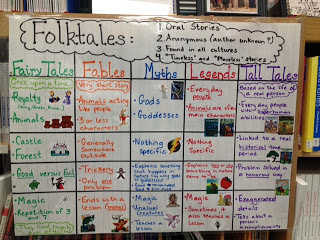
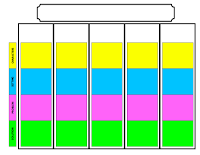

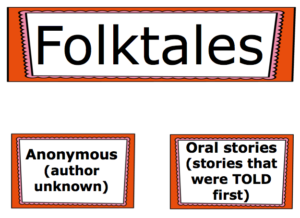
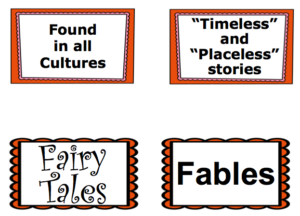
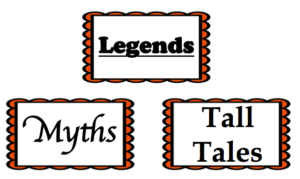
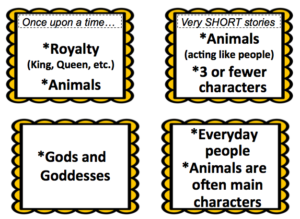
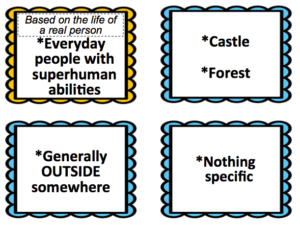


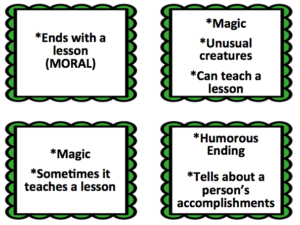
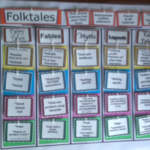
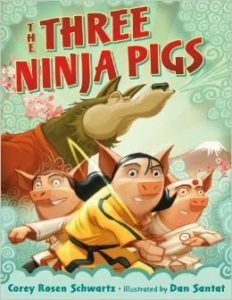
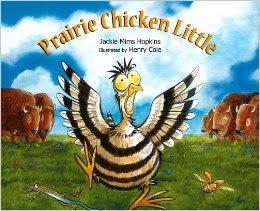

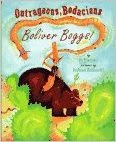
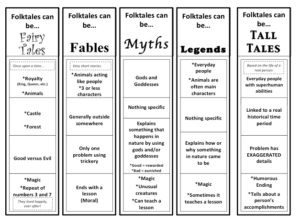
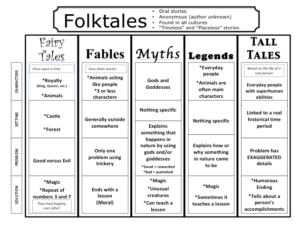




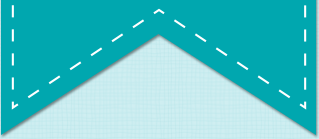

Hi Sandy!
Through twitter I found your poster titled "I'm digital citizen!" and I have to say. it's amazing! My question to you is if it's okay for me to make an adaption of it into Swedish so that I can share it with teachers in Sweden. There would be no profit involved what so ever and of course I will credit it to you. Please e-mail me your response jacob@mollstam.com
//Jacob
Jacob, thanks for your interest! I've emailed you back. Please let me know if you have any questions. 🙂
Thank you SO much for sharing the wealth. I am a 3rd grade teacher and I am introducing Folktales to class next week. This is an awesome resource and it is beautifully scaffolded!
What a great idea. You certainly have made defining and explaining folktales easier. I hadn't realized that the number 3 and 7 were so prevalent.